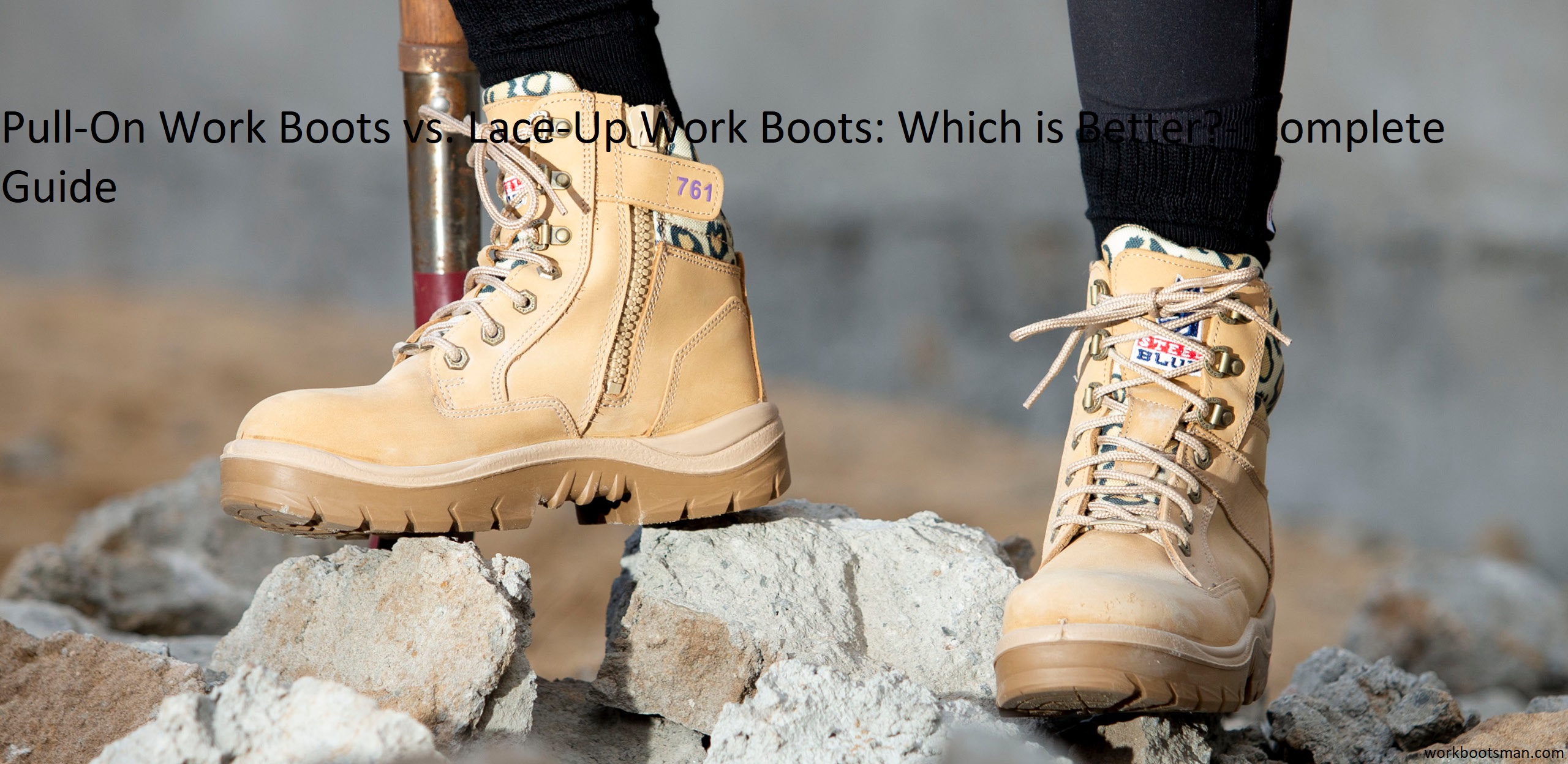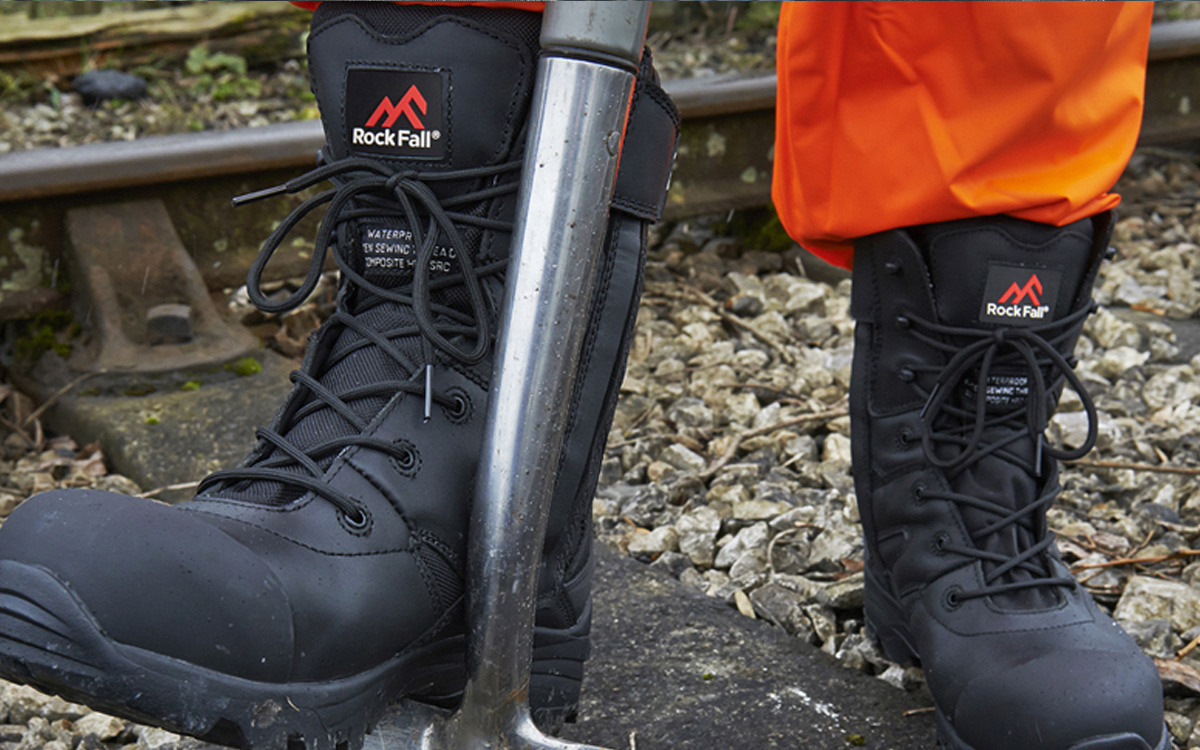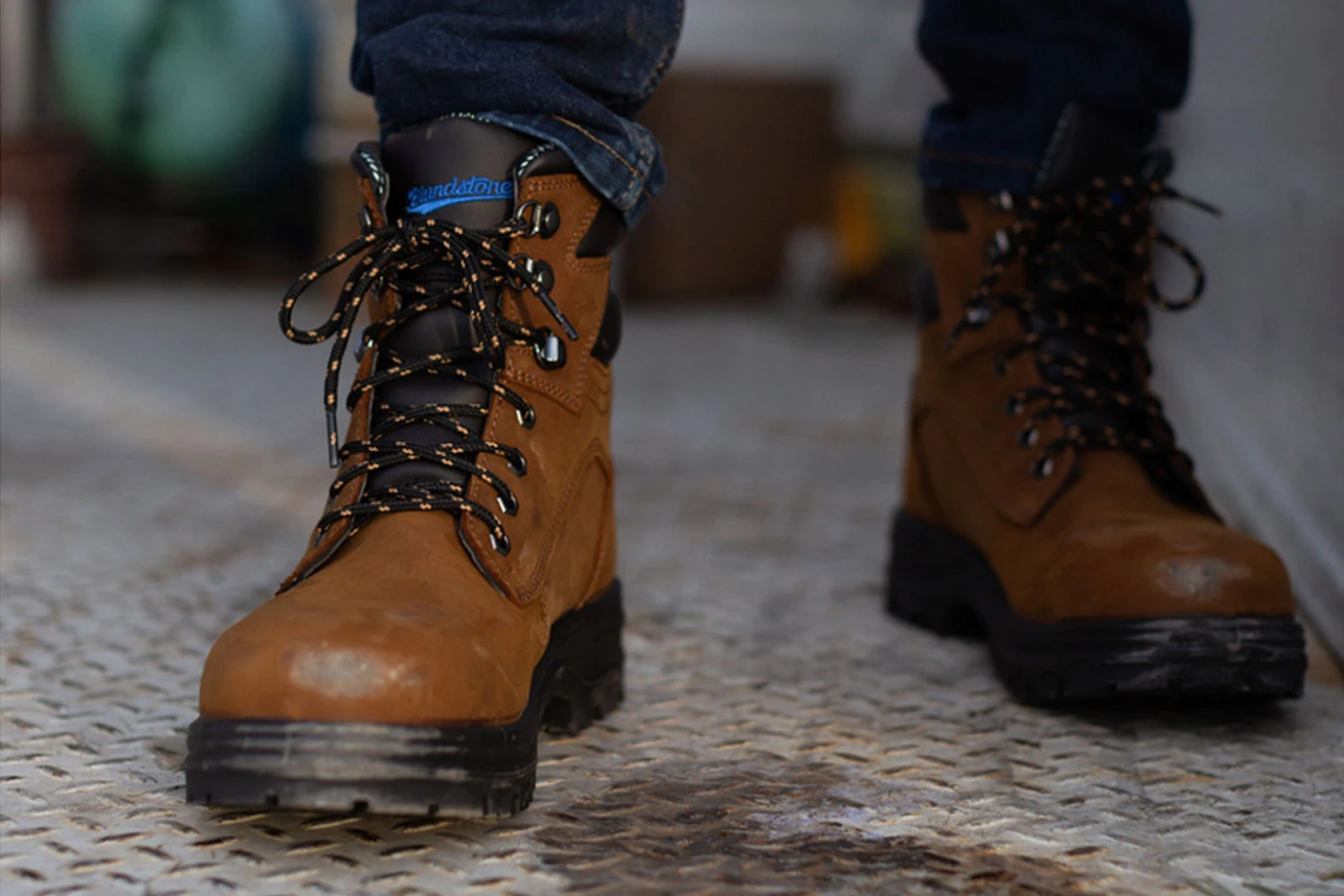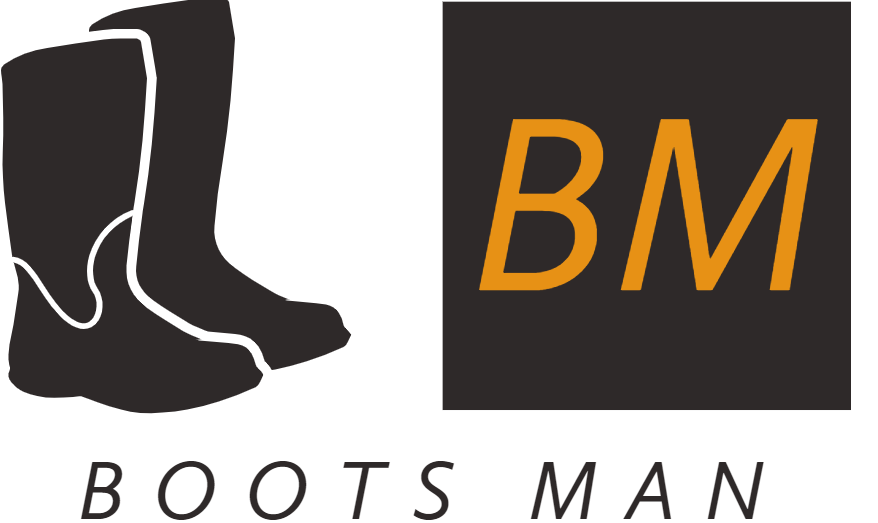Are you confused about which work boot is best for you- lace-up, or pull-on? You don’t need to worry; this article provides a complete guide on slip-on and lace-up work boots along with the pros and cons of each.
Here, you’ll learn what type of job is best suited for each style so that making your decision becomes easier.
Making the right choice when it comes to deciding on the type of work boot that is best suited for your job can be an important and difficult decision. To make an informed decision, you need to understand the pros and cons of both pull-on work boots and lace-up work boots. By doing so, you’ll be able to find the ideal work boot for your given situation.
This comprehensive guide will provide essential information about each type of boot to help you make an informed purchase decision. Included in this guide will be a breakdown of what materials are used in each type of boot, how they differ in terms of comfort and safety, their benefits and drawbacks, as well as tips on how to choose the best option for you. After reading this guide, you’ll know exactly which type of work boot is right for your job!

Lace-Up Work Boots
Lace-up work boots provide increased ankle support and a customized fit, making them the preferred choice for many manual labor workers. Their lace-up design and higher cut shaft give extra support, help to reduce fatigue and protect against sprains or other injuries in hazardous terrains. They also typically have waterproof linings for use in wet conditions or insulation to keep you warm in cold weather.
Additionally, lace-up work boots come in a variety of materials and styles as well as steel toe or non-steel toe options depending on your safety requirements. They also provide cushioning to keep your feet comfortable during long days of manual labor. With this range of options they can be worn with both casual and more formal attire, allowing you to transition between the jobsite and office easily, making them an ideal choice for professionals working in a variety of industries.
Description and construction of lace-up work boots
Lace Up work boots are crafted with leather uppers and typically feature a steel or a composite toe-box which offers protection from various bumps, cuts and impacts. Its laces are usually constructed of leather but can also be of canvas material. The laces on these boots are lengthened to provide extra security around the ankle and the foot.
This classic construction is celebrated for its ability to provide an excellent fit, increased understand support and reduced risk of ankle pain. It also allows you to make minor customizations to the boots in order to get a secure fit tailored specifically for your feet.
As an added bonus, lace-up work boots have soles that are resistant to slipping due to their traction treads, making them great for use on wet or slippery surfaces.
Advantages of lace-up work boots

Lace-up work boots offer several advantages over pull-on boots. They are adjustable, allowing the wearer to adjust the fit to accommodate varying foot sizes and widths. They also offer better protection, as the laces can be tied tightly or adjusted for a snug fit, providing more stability and support.
Additionally, lace-up work boots provide superior ankle protection due to their higher profile, which offers greater support and a larger area of coverage for the ankle. The laces also allow for improved breathability, as air can circulate more easily than it would in pull-on style boots.
Finally, lace-up work boots are more easily customizable in terms of color and design options. With the additional lacing hole options available on some models, workers can create unique styles and designs to suit their own tastes and preferences.
Disadvantages of lace-up work boots
Although lace-up work boots provide flexibility and a customized fit, they also come with certain drawbacks that can make them less desirable. One of the most significant drawbacks of lace-up work boots is that they require several minutes to adjust each time you wear them. This can be especially inconvenient if you are frequently in and out of your boots throughout the day or if you are in an environment that requires speed and efficiency aside from safety.
Additionally, laces can become frayed or torn due to frequent use, creating a hazard when they come undone while on the job. Furthermore, laces may not hold up against tough environments such as construction sites or heavily industrial areas where individuals are constantly exposed to extreme temperatures and heavy machinery. These hazards can make it difficult for lace-up work boots to provide maximum traction and protection for your feet.
As a result, many individuals opt for pull-on work boots which are easy to get on and off quickly without having to deal with laces.
Best uses for lace-up work boots
Each type of work boot comes with its own set of benefits and drawbacks. In the case of lace-up work boots, there are a few major advantages that come with this style of shoes. The main one is support — lace-up boots offer the most foot and ankle support for those who will be engaging in strenuous labor, as the laces allow for a customized and very secure fit. They are also typically more breathable than pull-on work boots with their increased number of vents, which significantly aids in comfort and breathability. Additionally, virtually any size or width can be accommodated within this style due to its cinching features.
When it comes to which type is best for a particular job or situation, lace-up boots may be more traditional for certain working environments, such as warehouse jobs or construction sites; dirt and mud can easily get into pull-on styles in these line of works. Lace-up styles are also beneficial in wet conditions as they tend to provide better stability on slippery surfaces compared to pull-on varieties. Ultimately, there is no definite answer — both styles offer advantages and disadvantages — so it is important to consider factors like comfort level, safety rating, weight preference and durability before selecting your ideal pair.
Comparison of Pull-On and Lace-Up Work Boots

When it comes to selecting the right pair of work boots, there are several factors to consider – one of which is whether or not you should choose pull-on or lace-up. Both types of boots offer benefits, so it can be difficult to decide which is better for you. To make things easier for you, below is a comparison of the features and advantages offered by each type of boot.
Pull-On Work Boots: Pull-on work boots are great for quick entry and exit, as well as easy on/off access. Their flexibility allows for more comfortable wear and superior mobility around tight spaces. The tough leather shafts also offer additional protection from abrasions and ensure a secure fit.
Lace-Up Work Boots: Lace-up boots provide excellent support around the ankles as well as rigidity that can help prevent blisters while walking long distances. They also allow users to make smaller adjustments in tightness levels through their laces that can help improve comfortability. What’s more, lace-up work boots usually have thicker soles providing better ground traction and durability than pull on versions.
Overall both pull on and lace up work boots provide a lot of value depending on the job your performing; however considering all the pros associated with each type of boot it may be hard to decide which one is best without further information so read our full guide before making your decision!
Comparison of comfort and ease of use
When it comes to comfort and ease of use, there is no single answer that works for everyone. The type of work you do, your schedule, the tasks you have to complete and the climate you work in are all factors that can affect the decision between pull-on and lace-up work boots.
For those looking for maximum comfort, the pull-on option may be ideal. Not only do these boots slip on easily – no time spent tying or untying laces – but they are often also designed with a convenient loop or handle making them even easier to put on and take off. They usually come with a soft lining to provide extra comfort and warmth while working in cold weather environments. Plus, support banding around the footbed keeps your feet firmly held in place without the need for laces.
Where lace-ups shine is when it comes to their fully adjustable fit – especially important for those who stand all day or make frequent changes in terrain like hikers or mechanics. With adjustable laces at both the top and bottom of your boot, you can securely secure your foot in place and customize your own individual fit preferences from tight adjustment to loose fitting areas like around your toes. Furthermore, good quality laced up boots are extremely durable against wear & tear over time so you will get long term use out of them saving money over time with minimal maintenance needed due to their strong build quality.
Comparison of durability and protection
When looking for the most effective protection and comfort, the choice between pull-on work boots and lace-up work boots can be difficult. Both styles of work boots provide excellent protection and can be worn safely in different working environments, but there are several key differences to consider in terms of durability and protection.
Pull-on boots are generally easier to put on and take off, making them a great choice for wearers who frequently need to enter or exit hazardous areas quickly. They also provide excellent ankle support due to their fitted construction and offer superior cushioning with their padded insoles. However, this style lacks lacing which can provide better adjustability for workers with different foot sizes or shapes. Additionally, pull-on boots tend to be slightly less durable than lace-up styles since the upper material is often thinner and more easily torn.
Lace-up work boots, on the other hand, offer much greater adjustability to accommodate different foot shapes thanks to their secure lacing system. They usually feature thicker uppers that provide greater durability than a pull-on style as well as reinforced toes that can protect workers from impact injuries. However, these types of boots may take a bit longer to put on or take off due to their lacing system which may not make them ideal for quickly entering high risk areas.
Comparison of style and versatility
When it comes to choosing the right type of work boots, the options available can be quite overwhelming. Do you choose pull-on or lace-up? With so many features and styles to pick from, it’s difficult to know which option is best for you. This guide will compare the pros and cons of each style and help you decide which one is best for your needs.
Pull-On Work Boots: Pull-On work boots are designed with a convenient slip-on style that eliminates the need for extra time when putting on your shoes. This type of boot has a padded collar and a comfortable design that provides a snug fit around the ankle instead of laces. As a result, these shoes are great for quickly getting in and out of your safety gear when needed. The flexibility of not having to worry about laces makes them easy to get on and off quickly as well as keeps them secure during work activities like lifting or climbing ladders.
Pros: -Convenient slip-on style eliminates extra time when putting on shoes -Padded collar provides a snug fit around ankle -Ideal for quickly getting in/out of safety gear -No need to worry about laces; keeps feet secure during work activities
Cons: Less customized fit like traditional lace up boots May require extra padding insole or half sizes depending on foot shape & size -> may require extra time & money investment
Lace Up Work Boots: On the flip side, lace up work boots have an adjustable fit offering more support than pull on boots. The traditional form helps keep your feet secure while providing an adjustable fit depending on how tight or loose you prefer them to be around your ankles. These types of boots often come with additional features such as steel toes or composite toes that can help protect against potential job site hazards such as falls, punctures, electricity exposure, etc.
Cons: Extra time required for tying/untying shoelaces before/after job activities -> may consume more time during critical moments Tighter fit not ideal if more flexibility is needed; bulky design may reduce mobility
Conclusion

When deciding between pull-on work boots and lace-up work boots, it all comes down to personal preference. Both offer their own advantages and both can provide an adequate level of protection for your feet. Pull-on boots often have a more slip-resistant sole, while lace-ups are usually lighter in weight and have more ankle support. Ultimately, when it comes to which is better, the choice is up to you.
If you’re looking for the best compromise between durability and versatility, then choosing a pair of mid-cut lace-up work boots might be the way to go.
FAQs
Which is better lace up or slip on?
It depends on the situation and personal preference. Lace-up boots provide a more customizable and secure fit, which can be important for activities like hiking or working in hazardous environments. Slip-on boots, on the other hand, are convenient and easy to put on and take off.
Why are lace up boots better?
Lace-up boots are better for certain situations because they provide a more secure and customizable fit. The laces can be tightened or loosened to accommodate different foot shapes and sizes, and they can help prevent the foot from sliding around inside the boot. This can be especially important for activities like hiking or working in hazardous environments where a secure fit is necessary.
What boots are best for work?
The best boots for work depend on the type of work being done. Steel-toed boots are often required for construction or industrial work, while slip-resistant boots are important for jobs that involve working in wet or slippery conditions. Some popular brands for work boots include Red Wing, Timberland Pro, and Wolverine.
What is the best work boot to buy?
The best work boot to buy depends on the individual’s needs and preferences. Some factors to consider include the type of work being done, the environment the boots will be used in, and any foot issues or concerns. It’s important to choose a high-quality boot that provides adequate support, protection, and comfort for the wearer.
What is the best boot to stand in all day?
Boots with good cushioning and support are best for standing in all day. Look for boots with features like a contoured footbed, shock-absorbing midsole, and supportive arch. Some popular brands for comfortable work boots include Keen, Merrell, and Dansko.
What are the best work boots for bad feet?
For individuals with bad feet, it’s important to choose work boots that provide adequate support and cushioning. Look for boots with a contoured footbed, supportive arch, and shock-absorbing midsole. Some popular brands for work boots for bad feet include Timberland Pro, Red Wing, and Dr. Martens.
Can I wear lace up boots in the office?
It depends on the office dress code and the style of the lace-up boots. In many cases, lace-up boots can be appropriate for a business casual or creative office environment. However, it’s important to choose a boot that is polished and professional-looking, and to pair it with appropriate attire.
Are lace or boa boots better?
Both lace and boa boots have their advantages and disadvantages. Lace boots provide a more customizable fit, while boa boots are convenient and easy to put on and take off. Ultimately, the choice between lace and boa boots comes down to personal preference and the situation.
What are the strongest work boot laces?
Kevlar and nylon are two materials that are commonly used in strong work boot laces. Some popular brands for strong work boot laces include Rhino Laces, Ironlace, and Red Wing.
What type of safety boots are best?
The best type of safety boots depend on the specific hazards of the work environment. Steel-toed boots are important for protecting the feet from falling objects, while slip-resistant boots can prevent slips and falls. Some other features to consider when choosing safety boots include electrical hazard protection, puncture-resistant soles, and waterproofing.
See Also:
- Best steel toe boots for warehouse work 2023
- Best boots for irrigation work 2023
- Best steel toe waterproof work boots 2023
- Best steel toe waterproof work boots 2023
- Best steel toe work boots for standing on concrete all day 2023

